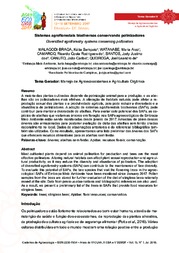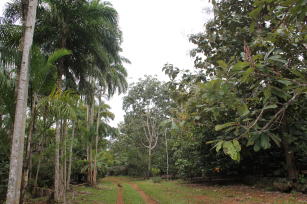Intercropping green manure potentiates floral resources in agroecological stingless beekeeping
Intercropping green manure potentiates floral resources in agroecological stingless beekeeping
An innovative study conducted in family farming areas in the Nova Odessa and Mogi Mirim town limits in São Paulo state revealed that intercropping green manure species, specifically sunflower and buckwheat, can be an effective strategy to expand the supply of floral resources in stingless beekeeping that is integrated within agroecological production systems.
"The research assessed plant density and the flowering period of crops, in single and intercropped cultivation, focusing on the properties of the Agroecological Family Farming Cooperative in Nova Odessa and Americana, and the Oliveira Farm, located in the Vergel State Settlement, in Mogi Mirim. The results indicated that there were no significant differences in plant density and flowering period between single and intercropped crops," the Embrapa Environment researcher Joel Queiroga explains.
Buckwheat in particular stood out as it offered a longer flowering period when compared to sunflowers and an abundance of attractive flowers for bees, especially mandaguaris (Scaptotrigona postica). The integration of sunflower and buckwheat as green manures not only maintained plant density, but also significantly extended the period and diversity of floral resources available to stingless bees.
The relevance of this type of intercropping goes beyond the improvement in floral supply. During the rainy season, buckwheat flowers have been shown to be highly attractive to mandaguari bees, suggesting a promising potential as a food source for those stingless bees.
"The study emphasizes the importance of integrating agro-ecological agroforestry systems and the breeding of stingless bees to ensure socioeconomic and environmental sustainability. The absence of pesticides and the diversity of floral resources from the green manure comprise additional benefits for stingless beekeeping", underscores Katia Braga, an Embrapa Environment researcher.
For the Embrapa Environment analyst Waldemore Moriconi, in addition to that, the study points to the versatility of sunflower plants, whose inflorescences attract a variety of native bees, including the stingless ones. Buckwheat, in turn, not only offers resistance to acidity and good development in poor soils, but is also a promising green manure for the regeneration of degraded soils.
These findings, which were obtained in detailed studies in two specific family farming areas in São Paulo state, provide valuable insights for the promotion of sustainable agricultural practices and improvement of management practices that aim at better integration between agroecological systems and stingless beekeeping.
Other study participants include researchers Laleska Rabelo from the Federal University of São Carlos; and Larissa Bellini and Marielle Lopes, from the University of Campinas.
Cristina Tordin (MTb 28.499/SP)
Embrapa Environment
Press inquiries
meio-ambiente.imprensa@embrapa.br
Phone number: +55 19 99262 6751
Translation: Mariana Medeiros (13044/DF)
Superintendency of Communicatiosn
Further information on the topic
Citizen Attention Service (SAC)
www.embrapa.br/contact-us/sac/




